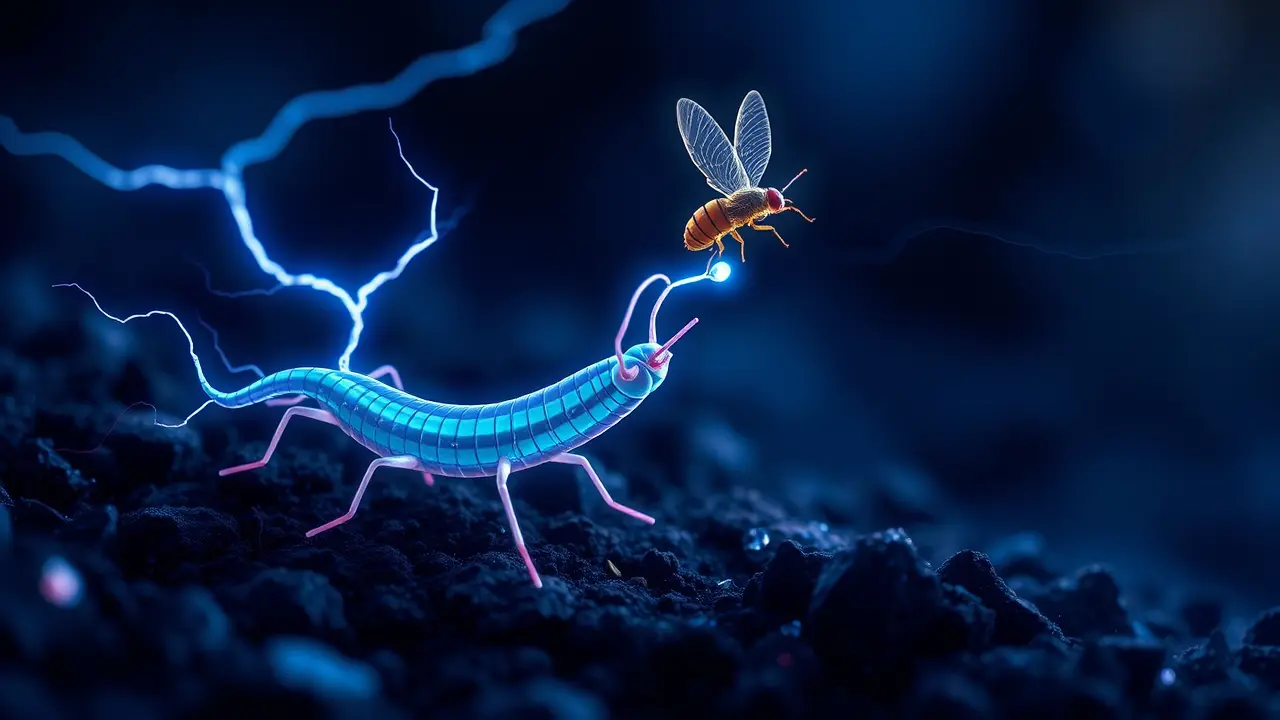This tiny worm uses static electricity to hunt flying insects
In the quiet, unseen dramas of the forest floor, a microscopic nematode, *Steinernema carpocapsae*, has been revealed to wield a force as fundamental as gravity and as invisible as the wind: static electricity. This parasitic worm, no longer than a grain of sand, engages in a lethal ballet with its unsuspecting prey, flying insects, by harnessing the power of electrostatic attraction, a discovery by a collaborative team of physicists and biologists from Emory and Berkeley that fundamentally rewrites our understanding of predation at the smallest scales.Imagine the scene—a host-seeking worm, having emerged from its previous insect host, contorts its body into a J-shaped stance, a poised hunter waiting in the leaf litter. For decades, the prevailing wisdom suggested these leaps were purely mechanical, a matter of muscular tension and trajectory.But high-speed cameras and sophisticated mathematical modeling have now captured the true orchestrator of this deadly jump. The worm itself accumulates a slight positive charge as it moves through its environment, while a low-flying insect, such as a fruit fly, generates a negative charge from the friction of its wings beating against the air.This creates an electrostatic field, an invisible bridge of force that actively pulls the worm upward, dramatically increasing the success rate of its aerial assault. It’s a form of ‘electrostatic ecology’ in action, a silent, pervasive interaction that has likely shaped predator-prey relationships for eons, entirely unnoticed by human observers until now.This finding resonates deeply with the principles of interconnectedness I’ve witnessed in studying fragile ecosystems; it’s a poignant reminder that the laws of physics are not confined to laboratories but are active, vital participants in the struggle for survival. The implications ripple outward, challenging the very definition of sensory perception in invertebrates and forcing a reconsideration of how we model population dynamics in soil ecosystems.If a worm can sense and exploit an electric field, what other hidden sensory worlds are we missing? This discovery also casts a sobering light on the potential vulnerabilities of such finely tuned systems. As we continue to alter our planet’s atmospheric composition and electrical properties with pollution and climate change, could we be inadvertently disrupting these ancient, electrostatic dialogues, with cascading consequences for biological control and soil health that we are only beginning to fathom? The humble nematode, it turns out, is not just a parasite, but a testament to the elegant, complex, and often invisible forces that bind all life, a tiny guardian of a secret that forces us to look at the natural world with renewed wonder and a profound sense of responsibility.
Latest News
The charts are whispering what the true believers have felt in their bones for weeks—Dogecoin is carving out a bottom.
17 hours ago5 comments
The Institute for Fiscal Studies has thrown a stark warning onto Rachel Reeves's desk, urging the Chancellor to confront a potential £22 billion shortfall in
17 hours ago3 comments
Alright, let's break down this absolute heater of a performance from the Chicago Blackhawks, because if you missed this one, you missed a party.
17 hours ago5 comments
The ice was hot last night in the NHL, folks, serving up a slate of games that felt less like a regular season Tuesday and more like a playoff preview with a
18 hours ago3 comments
The XRP chart is painting a tantalizing picture for those with the stomach to withstand the relentless pressure from crypto's leviathans.
18 hours ago4 comments
It’s in the small shifts, the quiet recalibrations of a Thursday morning, where the most meaningful change often takes root.
18 hours ago4 comments
In a move that sent ripples of quiet confidence through the crypto ecosystem, blockchain intelligence firms tracked a monumental treasury allocation from
18 hours ago4 comments
In a move that would have drawn a nod of approval from historical figures like Churchill, who understood the delicate balance of power within democratic
18 hours ago2 comments
JA
Jamie Larson123k4 hours ago
wait what so the worm is basically using the force now? that's wild tbh
0
JA
Jamie Lopez123k12 hours ago
wow that's wild tbh, nature is just out here using cheat codes
0
JA
Jamie Lowe123k19 hours ago
of course the worms are using electric powers now, just another thing i have to worry about smh
0
